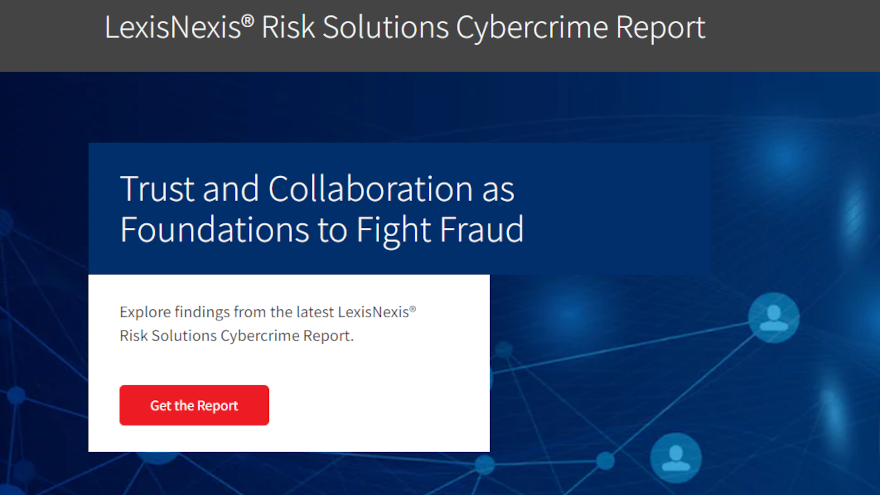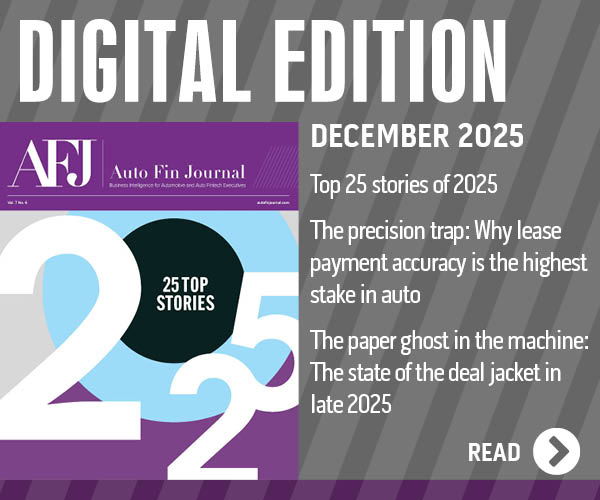LexisNexis Risk Solutions: Digital cybercrime attack rate up 20%

Screenshot courtesy of LexisNexis Risk Solutions.
By subscribing, you agree to receive communications from Auto Remarketing and our partners in accordance with our Privacy Policy. We may share your information with select partners and sponsors who may contact you about their products and services. You may unsubscribe at any time.
Last week, LexisNexis Risk Solutions released the results of its annual Cybercrime Report, an analysis of data from 79.8 billion transactions processed through its LexisNexis Digital Identity Network throughout 2022.
The report titled, “Trust and Collaboration as Foundations to Fight Fraud,” showed that the global digital attack rate increased 20% year-over-year, continuing the trend of digital fraud rising as economies re-open following the pandemic.
The LexisNexis Identity Abuse Index, which records the percentage of attacks per day, indicated attack rates fell in the fourth quarter of 2022 although the picture varies by region, with sizeable spikes in APAC, LATAM and North America at the end of the year.
Despite the effects of economic uncertainty, inflation and the war in Ukraine, LexisNexis Risk Solutions indicated digital transactions in 2022 went up by 24% year-over-year, primarily driven by increasing transactions in financial services (29%) and ecommerce (17%).
Other key findings from the LexisNexis Risk Solutions Cybercrime Report included:
—Mobile channels increasingly popular: Mobile transactions have reached a record high of 77% of all observed transactions in the Digital Identity Network, with the mobile app channel making up 82% of all mobile interactions.
Subscribe to Auto Remarketing to stay informed and stay ahead.
By subscribing, you agree to receive communications from Auto Remarketing and our partners in accordance with our Privacy Policy. We may share your information with select partners and sponsors who may contact you about their products and services. You may unsubscribe at any time.
—Attack rate continues to rise: The global attack rate continues to increase, driven by an uptick in the financial services and ecommerce industries at 31% and 29%, respectively. The report showed that criminals continue to target the communications, mobile and media industries more than any other sector. However, a noticeable decline of 27% year-over-year in the overall attack rate suggests criminals are changing focus.
—Vulnerabilities in payments: Across all desktop and mobile channels, attack rates on digital payments increased 27% year-over-year. Alternative payment methods, such as digital wallets, QR code payments and peer-to-peer transfers, continue to gain popularity, particularly in APAC. The shift has contributed to the 32% year-over-year growth in payment transactions in that region, yet criminals are also fast at exploiting vulnerabilities. The report showed a 50% year-over-year increase in APAC’s payment attack rate.
—Lucrative avenue for cybercrime: Automated bot attacks in the ecommerce space have grown 195% globally. Almost half of these attacks focused on the U.S., where ecommerce focused bot attacks increased by 127% year-over-year. Bot attacks increased 112% in the U.S. gaming and gambling industry, while the sector grows due to legalization in more states.
LexisNexis Risk Solutions went on to mention organizations are looking to establish consistent digital identity insights across all digital channels and end-customer touch points to mitigate rising fraud levels.
Experts said companies are striving to increase the level of trust with their customers, as well as identifying risk more easily.
The report showed that the percentage of transactions classified as trusted in the Digital Identity Network platform increased by 9% year-over-year, allowing organizations to provide a smoother customer journey.
“Businesses remain vulnerable to transactional fraud during this time of accelerated digitalization,” said Stephen Topliss, vice president of fraud and identity strategy for LexisNexis Risk Solutions. “Despite heightened regulatory scrutiny, technological innovations and higher public awareness, there are persistent challenges in preventing fraud. This trend is likely to endure as consumers continue adopting digital channels.
“As fraud levels and its sophistication increase, relying on multi-factor authentication alone as a defense is inadequate in today’s digital world,” Topliss continued in a news release. “Organizations, industries and countries must collaborate and identify the interconnected signals of complex fraud attacks because criminal networks working in a structured way are here to stay. Addressing the latest scams requires targeted machine learning models that can consume the latest digital intelligence insights, behavioral biometrics signals and mule account indicators.”
To download the entire report, go to this website.


